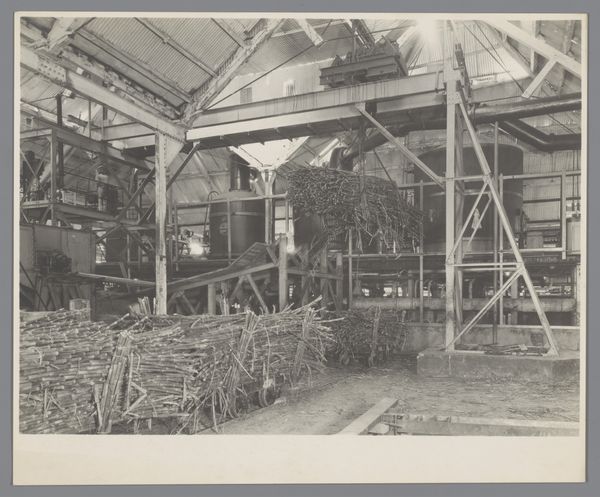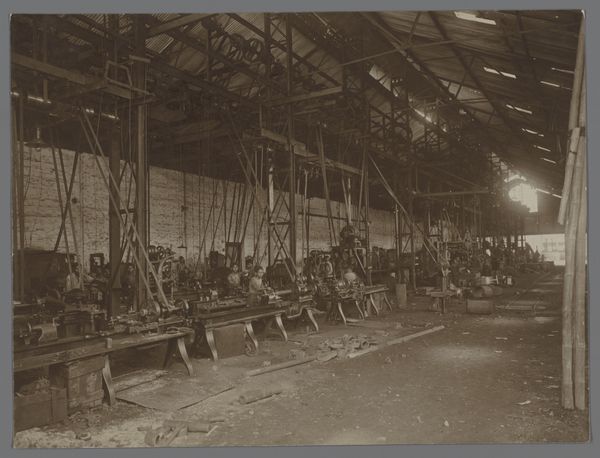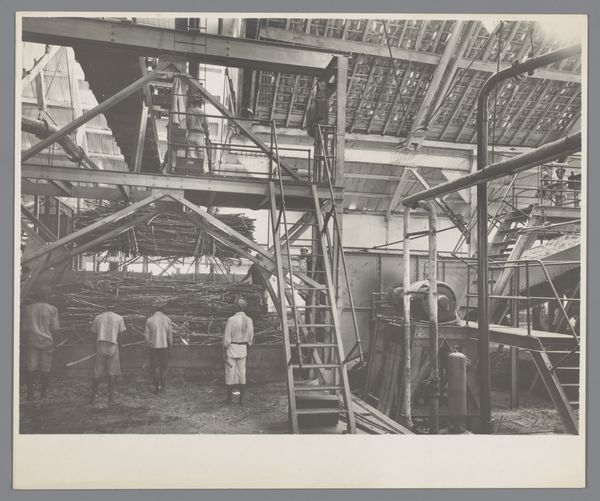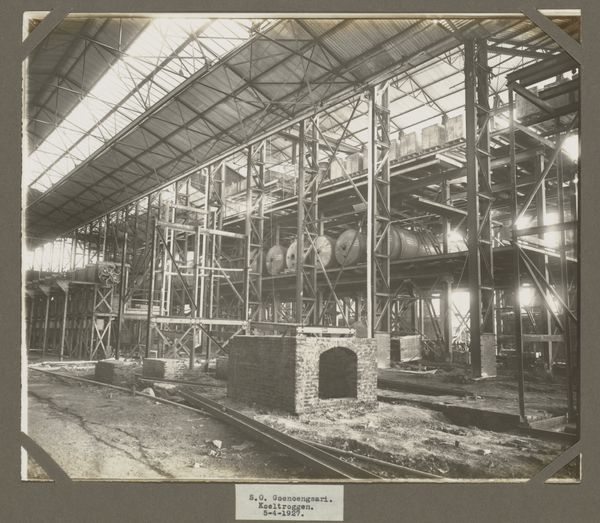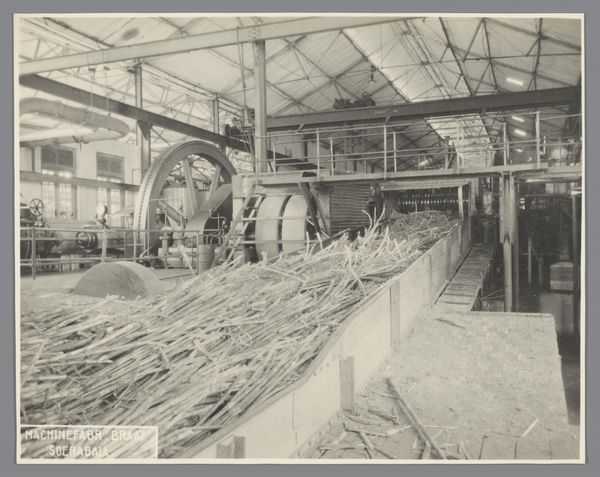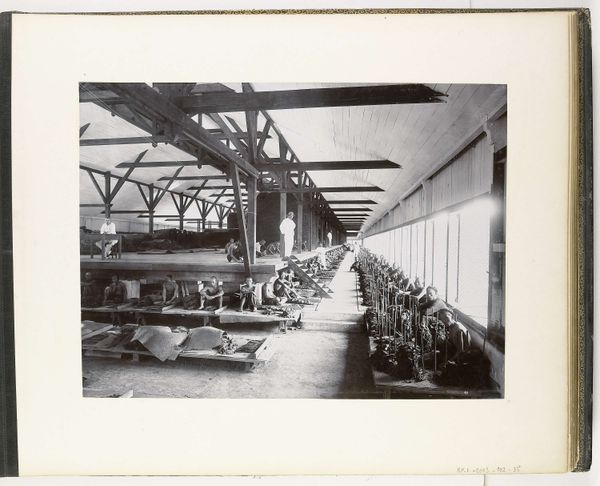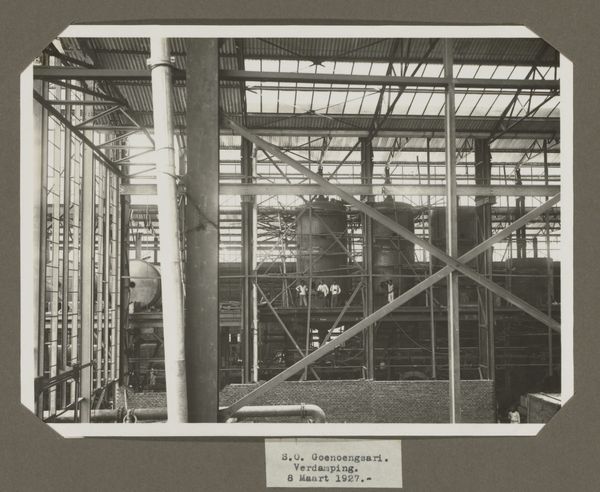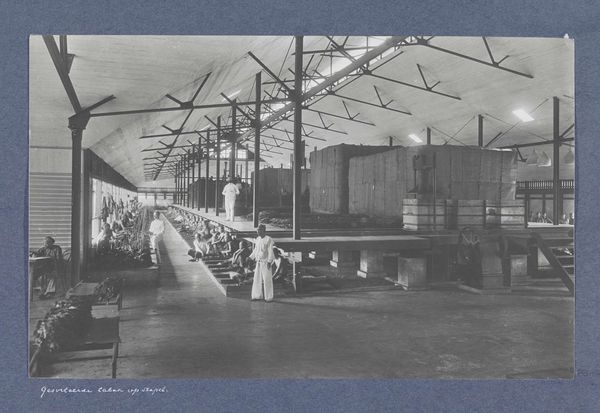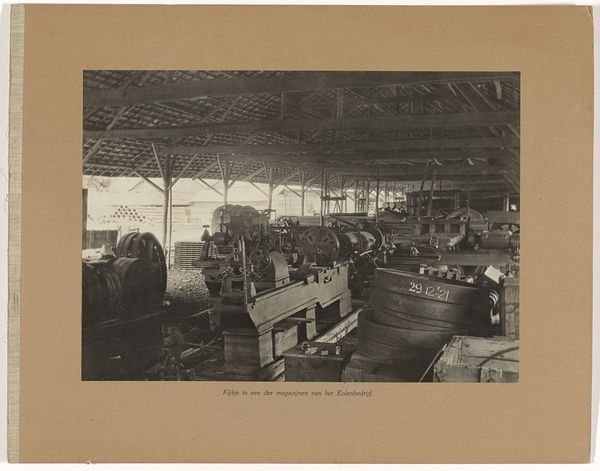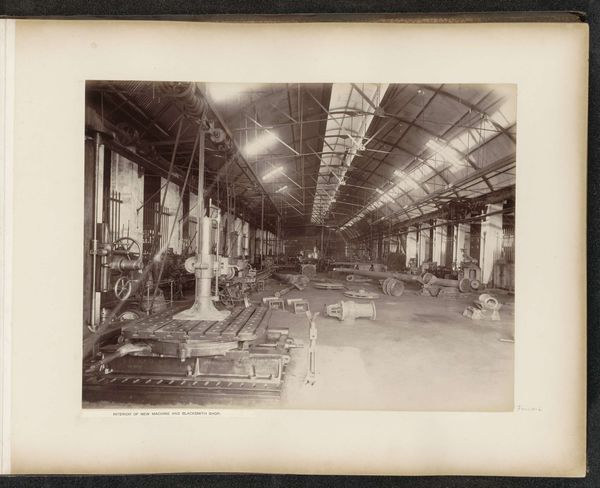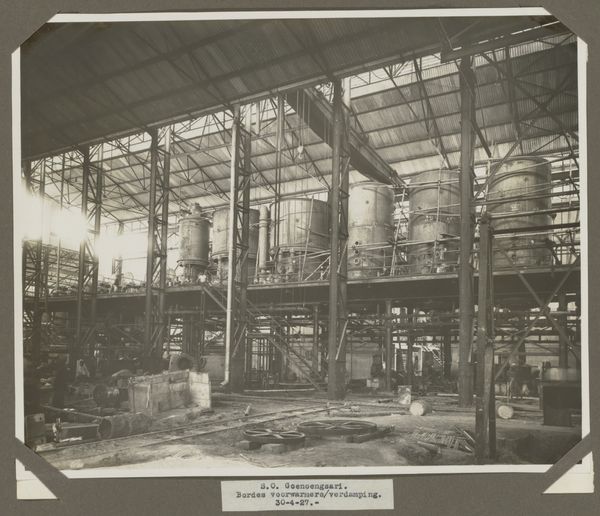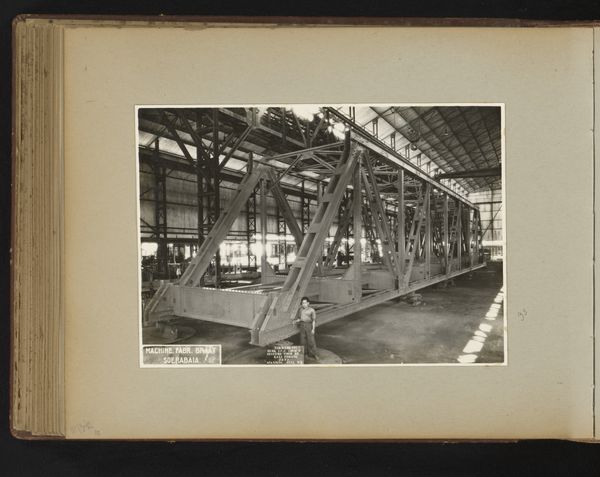
print, photography
# print
#
landscape
#
photography
Dimensions: height 189 mm, width 228 mm
Copyright: Rijks Museum: Open Domain
Curator: Otto Hisgen’s "Rietlosinrichting in bedrijf," a photograph captured sometime between 1917 and 1938, gives us a peek inside what I imagine is a sugar factory. What's your first reaction to this? Editor: It feels incredibly austere. The industrial space is cavernous, and yet, it's the sheer repetition of those bundled reeds that pulls me in, almost hypnotically. It's like a muted symphony of labor. Curator: Indeed. The rigid lines of machinery contrast strikingly with the organic chaos of the sugarcane itself, all rendered in monochrome. Hisgen really draws the eye into this contrast. I’m fascinated by the play of light and shadow here – it almost feels like he’s trying to find the inherent beauty within industrial infrastructure. Editor: Absolutely. There's a tension here, between the rational, systematized factory setting and the human cost associated with such industry. Consider who's absent in this scene and what social structures allow these industries to work. What about colonization, worker's rights and wealth disparity? It silently speaks of extraction on a grand scale. Curator: Right. He shows us the guts of it, all steel and sweat… metaphorically, since we don’t actually see any people here. But in that sense it’s kind of brilliant: those sugarcane bundles become stand-ins for the workers. I sense both exploitation and strangely enough, also the artistry inherent in efficient processing. What do you think, am I overreaching there? Editor: Not entirely. However, I would avoid valorizing exploitation, even through a creative lens. It's more fruitful, in my mind, to acknowledge the labor by interrogating the context rather than focusing solely on industrial "beauty," a phrase I find problematic given the system. The scale implies so much, from deforestation to profit margins to, in some instances, human bondage. Curator: I see your point, entirely valid, especially concerning whose narrative we’re emphasizing. Even so, to me, there's a sense of… meticulousness. Something human embedded in this mechanized system, beyond the economics, although I completely respect you’re bringing that to the foreground, of course. Editor: And thank you for indulging me, and that's crucial for art; the conversation it allows. For me, this image serves as a stark reminder to look critically at the seemingly mundane and reveal the intricate histories interwoven within them. Curator: I completely agree. And that’s maybe the magic in a seemingly simple landscape like this: there are always layered stories waiting to be told, as you wonderfully revealed!
Comments
No comments
Be the first to comment and join the conversation on the ultimate creative platform.
